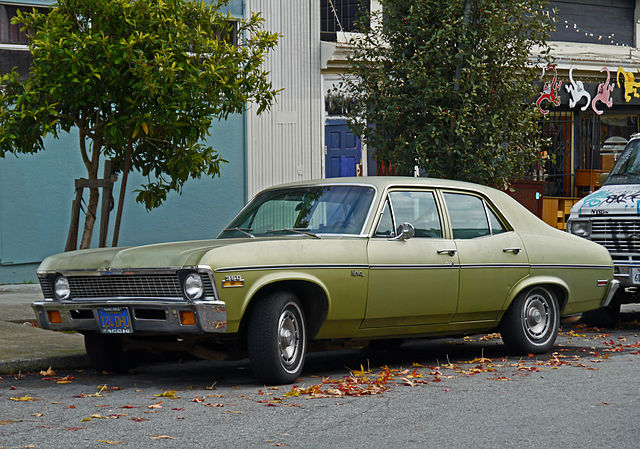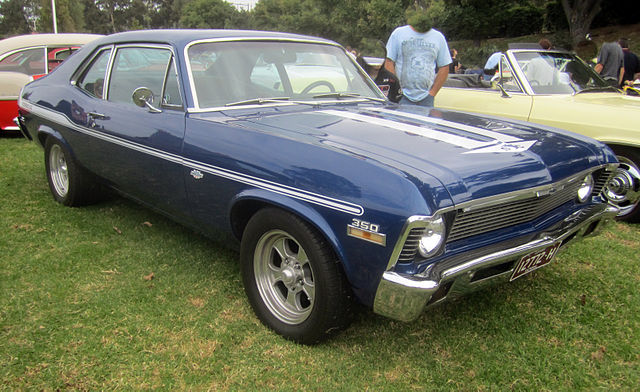
The Chevrolet Nova, especially its third generation spanning from 1968 to 1974, stands as a significant figure in the pantheon of American muscle cars. Renowned for its robust performance and understated aesthetics, the Nova was a versatile model that bridged the compact and muscle car markets.
This article explores the development, specifications, models, and lasting impact of the 3rd generation Chevrolet Nova.
Development and Design

Origins and Evolution
Originally launched as the Chevy II in 1962, the Chevrolet Nova underwent a comprehensive redesign for its third generation, which debuted in 1968. This generation marked a significant shift towards a more muscular and aggressive design, aligning with the prevailing trends of American automotive design of the late 1960s.
Design Features
The 1968 model introduced a longer wheelbase, shorter overhangs, and a more semi-fastback profile, which was a departure from the squarer lines of its predecessors. This generation was the first to be built on the newly introduced GM X-body platform, which allowed for greater interior space and improved suspension mechanics.
The design incorporated a more pronounced grille, flared fenders, and redesigned rear elements, providing a sportier look that appealed to a younger demographic.
Performance and Variants

Engine Options
Throughout its run, the third-generation Nova offered a variety of engine options, catering to a wide range of performance demands:
- Standard Engines: Initially, the model came with a choice between a 153 cubic inch four-cylinder and a 250 cubic inch inline-six.
- V8 Options: For those craving more power, Chevrolet offered several V8 engines, including 307, 327, and later, the 350 cubic inch options. These engines significantly enhanced the Nova’s performance, making it a favorite among muscle car enthusiasts.
Special Models
The Nova SS
One of the most celebrated variants of the Nova was the Nova SS (Super Sport) package. Introduced as a performance package, it included a 295-horsepower V8 engine in 1968, performance suspension, and special SS badging with a blacked-out grille and rear panel.
Over the years, the SS package saw various enhancements, including the introduction of a 350 cubic inch V8 by 1970, which solidified its reputation as a true muscle car.
The Yenko Nova
Another notable variant was the Yenko Nova. Developed by Yenko Chevrolet, these were dealer-modified versions that featured powerful 427 cubic inch V8 engines. These rare models were among the most powerful and desirable Novas ever built, with production numbers very limited, making them highly sought after by collectors today.
Interior and Features

Comfort and Convenience
The interior of the third-generation Nova was marked by a significant upgrade in materials and options. Standard features included more comfortable seating, improved heating, and optional air conditioning—luxuries that were becoming more common in compact cars of that era.
The dashboard and instrument panel were redesigned for better ergonomics and aesthetics.
Safety Improvements
Reflecting the growing emphasis on safety in the automobile industry, the 1968 Nova incorporated new safety features such as shoulder belts and side marker lights. Subsequent models saw the introduction of additional safety options, including a collapsible steering column and energy-absorbing bumpers by 1973, following the federal mandates.
Market Impact and Legacy

Reception and Sales
The third-generation Nova was well-received, with sales initially buoyed by its fresh design and robust performance options. It appealed to a broad audience, from families looking for a reliable compact car to younger buyers drawn to its muscle car capabilities.
Influence on Auto Design
The Nova’s blend of compact size and potent performance influenced a host of competitors, prompting a segment of “compact muscle” cars that blended practicality with power. This model was pivotal in defining strategies for compact designs with performance-oriented capabilities.
Legacy and Collectibility
Today, the third-generation Chevrolet Nova is celebrated as a classic. Its blend of everyday usability with the option for high-performance engines makes it a popular choice among classic car enthusiasts.
Models like the Nova SS and Yenko Nova, in particular, continue to command high prices in the collector car market, celebrated for their iconic status and performance pedigree.
Restorations and Modifications

Challenges and Opportunities in Restoration
The restoration of a third-generation Chevrolet Nova presents both unique challenges and rewarding opportunities for car enthusiasts. Key challenges often involve sourcing authentic parts, as some specific components may be rare or out of production.
Rust can also be a major issue, especially for models that were exposed to moist climates or salted roads.
However, the relatively simple design of the Nova makes it an excellent candidate for restoration. The car’s straightforward mechanical layout is generally easier to work with compared to more complex vehicles of the same era.
This accessibility makes the Nova a popular choice for amateur restorers and professionals alike.
Popular Modifications
Modifications are a common aspect of Nova ownership, with many owners opting to enhance performance, comfort, or aesthetic appeal. Performance mods typically include engine swaps, with the small-block and big-block V8s being popular choices for significantly boosting horsepower and torque.
Suspension upgrades are also common, aimed at improving handling and ride quality to match modern standards.
On the aesthetic front, modifications can range from custom paint jobs to complete interior overhauls. Many owners choose to keep the exterior close to factory specifications to maintain the classic look, while updating the interiors with modern materials and technologies like digital gauges, better insulation, and contemporary audio systems.
The Role of Community
The restoration and modification of classic cars like the Nova are supported by a vibrant community of enthusiasts. Clubs, online forums, and social media groups play a crucial role in preserving the knowledge and passion surrounding these vehicles.
These communities are invaluable resources for restoration advice, parts sourcing, and moral support during the often arduous process of bringing a classic back to life or customizing it to personal tastes.
These communities not only help in keeping the cars running and looking great but also in keeping the stories and histories of these classic machines alive. As a result, the Chevrolet Nova continues to be a beloved icon in American automotive culture, cherished by generations past and present.
Conclusion
The third-generation Chevrolet Nova is a testament to a time when automotive design successfully combined style, performance, and practicality. As it continues to be revered in classic car circles, the legacy of this generation of Nova serves as a reminder of its significant role in American automotive history and its enduring appeal to enthusiasts around the world.
